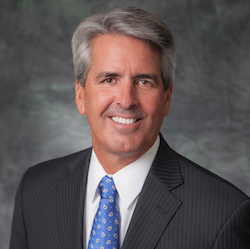This week the Conference of State Bank Supervisors issued a final proposed prudential standards rule for comment to address their concerns with nonbank servicers. The proposed rule addressed capital, liquidity, governance, policy related to entity survivorship, and more. It’s a meaty proposal and one whose intent should be welcomed as it can help to further lessen the unusual focus that nonbank lenders and servicers have been getting in recent years.
The proposal is clear in its attempt to align standards for nonbanks with FHFA guidelines, a goal industry should applaud as it is far easier to align with one set of national standards than to navigate separate standards across 50 states.
I am concerned, however, by some of the language in this document mischaracterizing nonbanks. Frankly, some of the accusations are exactly what caused the big banks to fail in the last recession when they were caught under-resourced and under-prepared. Language matters — and being clear on objectives without appearing prejudicial is critical. Let’s remind ourselves, after all, how the nonbank servicing sector grew in the years following the Great Recession.
In the fallout of the housing collapse of 2007- 2009, the U.S. economy saw home prices drop approximately 20% from peak to trough. Unemployment surged and the effect of unsustainable credit practices leading up to the recession resulted in millions of Americans unable — and in some cases unwilling — to keep their homes. There are a few lessons to remember here:
- Nonbanks did not create the unsustainable mortgage market. They are generally not balance sheet lenders. Nonbanks are intermediaries that originate loans to the terms of the ultimate investor. These investors included the GSEs, the Ginnie Mae programs, larger bank portfolios, and Wall Street firms.
- During the Recession, banks were unable to manage the default servicing challenge. Phones went unanswered, workouts were inconsistent, records were lost. Lawsuits targeted at banks flamed like a prairie fire across the nation. From robo-signing and more, states attorneys general and the Department of Justice took aim with large multi-billion-dollar settlements against mostly larger banks for servicing errors.
- The nonbank servicing model grew at the behest of the federal government and the GSEs and more. Companies like Ocwen and Nationstar, as well as many others, took on huge volumes of default servicing from banks as they were viewed to be better able to manage the challenge.
This was the beginning of the more significant growth of nonbanks in the mortgage industry. It began because mostly larger banks simply could not meet the challenge. It grew from that point forward as the vacuum in lending enlarged as many large banks and other lenders failed — and those that survived reduced their footprint in mortgages.
Nonbanks are not the problem here, they have been the solution to a void in both origination and servicing, and have created homeownership opportunities for far more Americans than otherwise would have been the case.
Why then does CSBS make statements like this: “This monitoring has resulted in observations and concerns about rapid market share growth, nonbank institution size and their financial stability and governance.” If this supervision concern is so acute now on this sector, where were these state regulators when banks were set up to fail in 2008 whether supervised by state or federal agencies?
The CSBS proposed final rule goes on to say, “Nonbank servicers may be more susceptible to economic downturns as they do not operate under a prescribed capital standard and therefore may retain less capital. And there are no comprehensive enterprise-wide liquidity requirements or standards to ensure sufficient reserves to continue servicing the MSRs in their portfolios in the event of material financial stress.”
And it adds: “Regulators and the industry have also recognized widespread data quality and data integrity issues, especially in the context of transferring servicing rights. Some nonbank mortgage servicers have struggled to integrate acquired loan portfolios and to locate legal and collateral documents associated with transferred loans. All these issues are exacerbated if a servicer’s operational capacity has not kept pace with its growth.”
This language is highly prejudicial in my view — especially when stated without perspective of the banks’ role in the last great recession and the fact that nonbanks came in to stabilize both the origination and servicing markets. The fact is, contrary to the CSBS statements, non anks have both liquidity and capital standards as required by the FHFA-regulated GSEs, GNMA, their warehouse lenders, and other investors, too.
The proposed rule itself is a good effort but needs to be scrutinized carefully for its impacts across the mortgage sector. It looks at originator/servicers, sub servicers, mono line servicers, and more. It sets minimum thresholds so as to relieve the smaller market participants.
As we evaluate yet another round of rulemaking in the mortgage sector, let’s remember three things:
- The rules from Dodd-Frank made nonbanks comply to more egregious standards than banks, with everything from the SAFE Act to TRID. How loans are disclosed today varies greatly whether one is a bank or nonbank, as nonbanks are held to a higher standard of detail. How one chooses their career in this industry comes with an added testing hurdle solely for nonbanks. Why is the playing field so uneven when the nonbanks were not the primary source of the problem behind the housing collapse?
- Nonbanks do not set the rules of lending. They sell all of their loans to investors. This means that the correspondent channels of balance sheet lenders, the GSEs, the GNMA/HUD lending programs, and what exists in the PLS sector is driving whatever risk exists in the mortgage market. Is the CSBS taking the time to focus on this sector as much as they are the nonbanks?
- Nonbank servicing is actually not owned by them. Nonbanks obtain the right to service under the authority of Freddie Mac, Fannie Mae, and GNMA. These institutions own the servicing and give the rights to the servicer. Why this bottom-up form of rulemaking is being pursued is something of keen interest.
In the end, the objective is likely positive as national standards are always better in the mortgage space when possible. But, we should all be wary of another set of rules that may be more onerous for this sector of the mortgage market that was not the cause of the last Recession and consists of a group of lenders and servicers that simply follow the rules set by the investors themselves — most of whom are backed by the federal government.
This column does not necessarily reflect the opinion of HousingWire’s editorial department and its owners.
To contact the author of this story:
David Stevens at dave@davehstevens.com
To contact the editor responsible for this story:
Sarah Wheeler at swheeler@housingwire.com






